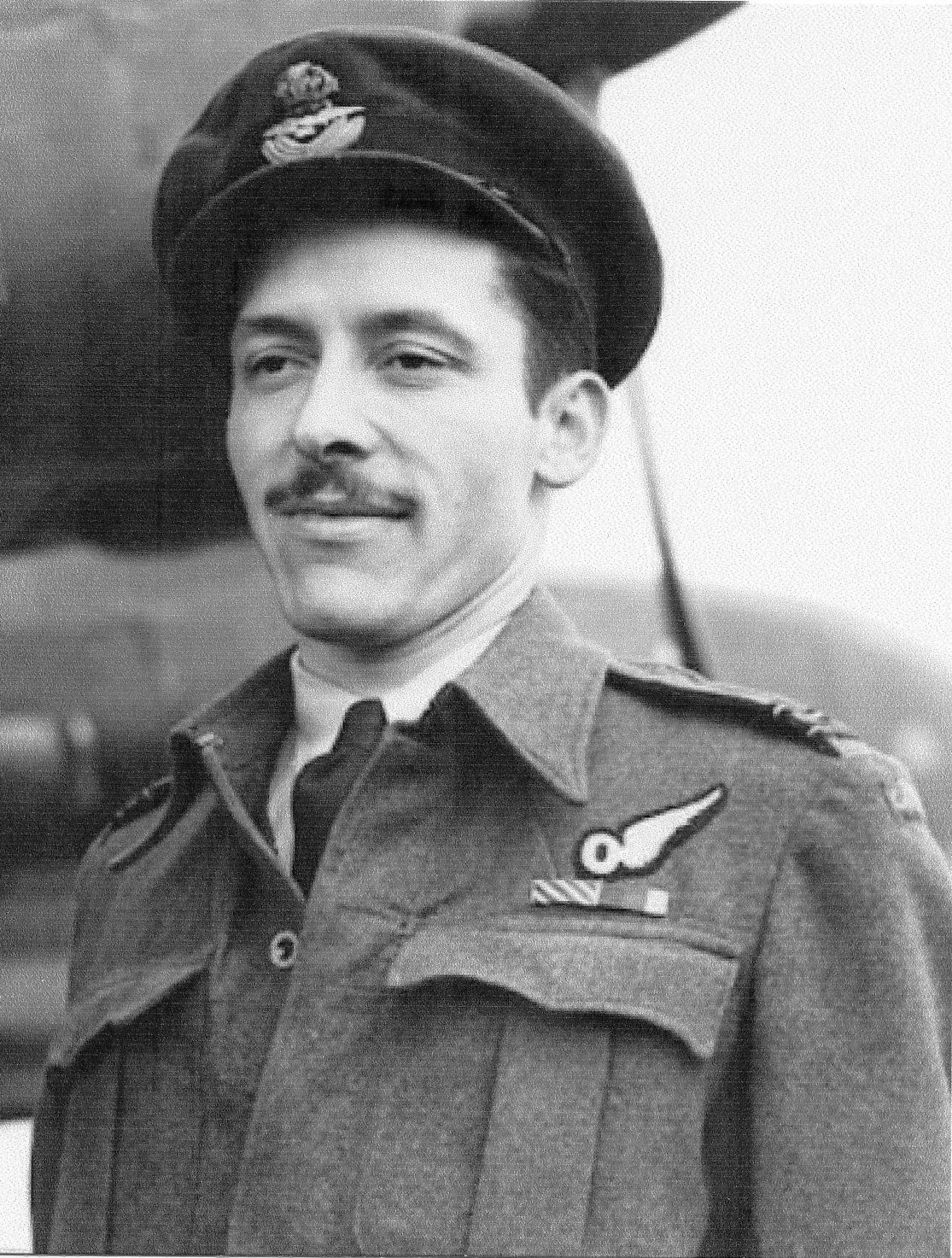BELL, P/O John Kopf - J16345

Citation - Distinguished Flying Cross
Award effective 3 June 1943 as per London Gazette dated 15 June 1943 and AFRO 1338/43 dated 16 July 1943. Medal presented 21 March 1944.Pilot Officer Bell has completed a large number of operational sorties against some of the most heavily defended targets in enemy territory including Lorient, Munich, Hamburg, St.Nazaire and the Ruhr. On one occasion in August 1942, his aircraft was badly damaged by an enemy night fighter just prior to reaching the target. Despite this the mission was successfully completed. With one engine useless and whilst over the sea the pilot experienced considerable difficulty in holding the rudders. Pilot Officer Bell immediately came to his assistance and by his co-operation and calmness contributed in a large measure to the safe return of the aircraft. At all times with a cool, quiet manner, Pilot Officer Bell has displayed a fine fighting spirit, skill and initiative worthy of high praise.
History
At 0940 hours No. 5 Group requested 12 crews for a bombing attack over Duisburg. Of the 12 aircraft detailed for this night’s operations, 2 were cancelled prior to take-off. From the 10 remaining aircraft, 7 were successful in reaching and bombing their primary target.
One of our aircraft which reached and successfully bombed the primary target encountered severe enemy action and flak both before entering the target and upon leaving it. Approximately nine minutes before target time, whilst doing his bombing run on the target, this aircraft was attacked by an enemy fighter which suddenly pounced upon our Hampden from out of cloud cover. The attack was so sudden that, before the WOP/AG’s [wireless operator/air gunner] noticed the enemy aircraft and took the necessary action, the enemy fired with all guns at a range of between 50-100 yards.
This attack took place at approximately 0230 hours and the first sign of attack was when tracer bullets were fired at the Hampden from dead astern. The pilot immediately put the Hampden into a deep diving turn to starboard pulling out at about 6,000 ft. The attacking aircraft was lost from sight and not seen again.
The two WOP/AG’s were unable to return the fire at the time of the attack owing to being thrown off balance by the unexpected violence of the attack. The attack was so fierce that the pilot’s impression was that all shells and bullets seemed to hit the aircraft everywhere.
There were three large holes in the elevators, one in the port aileron, one large hole in the port tail fin, one huge dent at the intersection of the tail boom and the fuselage, another large hole in the bottom of the port engine nacelle, the top gunner’s cupola was smashed and the magazines shot away from his guns, all port tanks were riddled, the hydraulics shot away, and the sides of the fuselage seamed and scored by cannon shells. One cannon shell struck the spar behind the pilot’s left shoulder in the fuselage. The top WOP/AG was wounded in this encounter and had shell splints embedded in his scalp. His face was all scratched up by perspex and flying splinters and he also had a deep cut in right hand caused by shell splinters which were later found to be embedded there. The shock from the shell splinters knocked the WOP/AG unconscious for approximately 30 seconds; upon his regaining consciousness the pilot instructed him to change places with the 2nd WOP/AG in the lower compartment, owing to blood streaming down his face and over his right hand from his wounds. Following this encounter, and although badly shot up, the pilot attempted another run on the target and, successfully unloaded his bombs as detailed. Approximately 10 minutes after leaving the target, explosions were heard from the port engine and this one stalled completely, remaining absolutely dead for the remainder of the journey.
At the time the port engine stalled the aircraft was flying at 9,000 ft, and shortly after this the aircraft fell into a right spin which the pilot managed to pull out of at 4,000 ft. Once the aircraft was under control, but flying at excessive speed, the pilot climbed to 6,000 ft. and then instructed his crew to prepare for abandoning aircraft, and a possible sea landing.
Once over the sea the aircraft lost more height. It was only at 4,000 ft. that the pilot was able to bring the aircraft under control and keep it steady at this height most of the way back. Whilst over the sea, the pilot’s right leg became so tired that he was unable to hold the rudder any longer, and, it was then that his navigator helped him by taking hold of the rudder bars with his hands - thereby taking part of the strain off the pilot. This the navigator managed to hold from there until their crash landing at R.A.F. Station Lakenheath. No other member of the crew besides the first WOP/AG were injured in this accident. All switches and gases were cut off at 500 ft. as the aircraft was coming in to land, and an attempt was made to land 75 yds. to the right of the flare path in order not to hinder either take-offs or landings which might have been taking place. As it so happened, an Oxford aircraft came in to land at about the same time our own aircraft landed. The hydraulics being completely shot up, it was necessary to make a belly-landing and the aircraft came to rest in a sand dune…
Both the Pilot and the Navigator were recommended for the award of the Distinguished Flying Medal.

Click to enlarge






